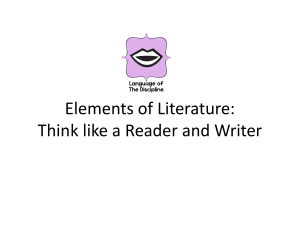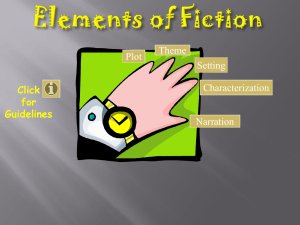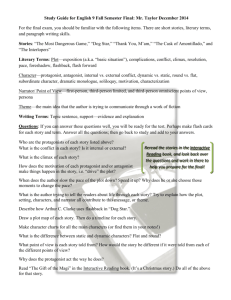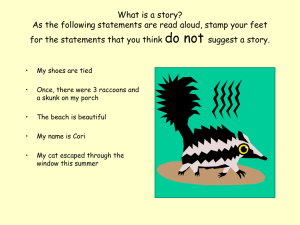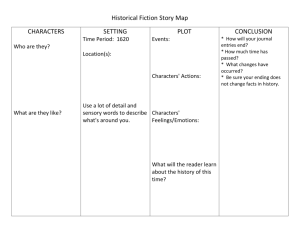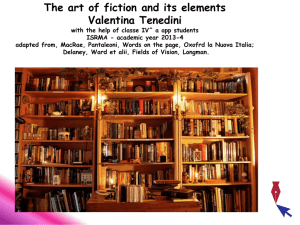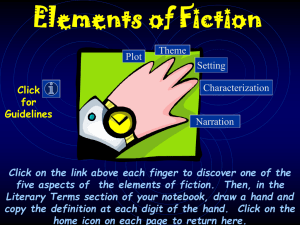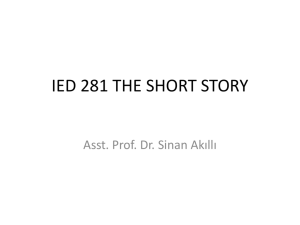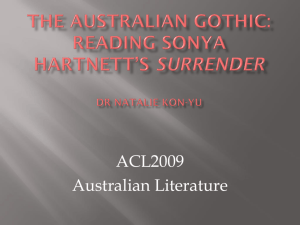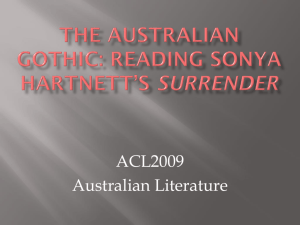Elements of Fiction Test English 111 Miss Finnigan September 2012
advertisement
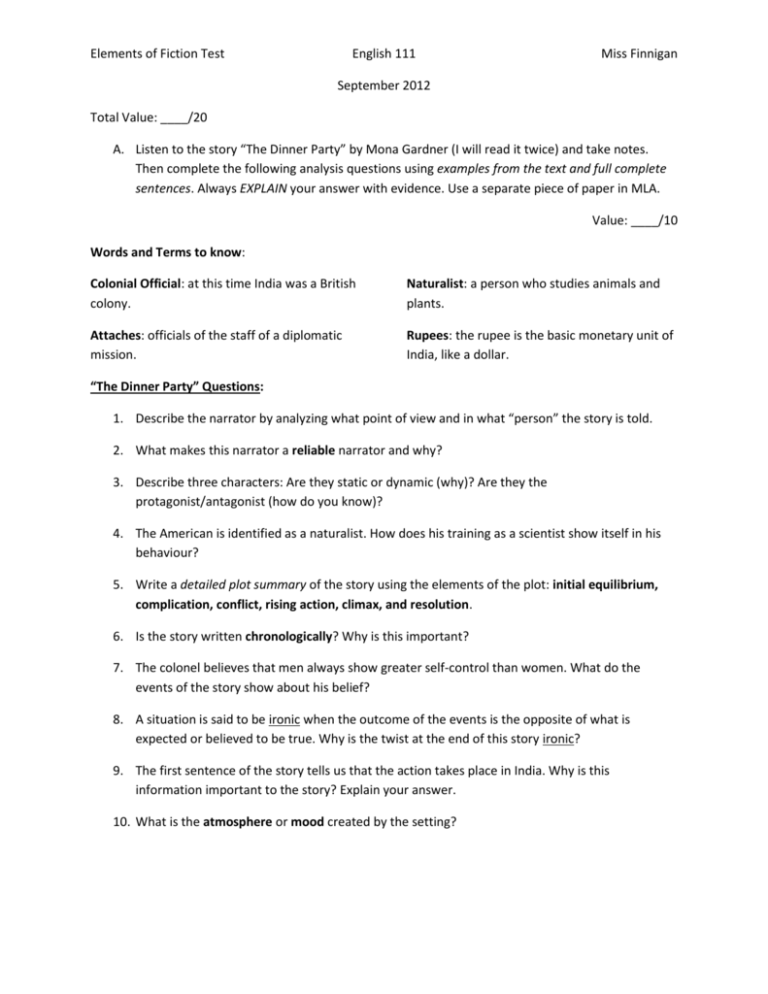
Elements of Fiction Test English 111 Miss Finnigan September 2012 Total Value: ____/20 A. Listen to the story “The Dinner Party” by Mona Gardner (I will read it twice) and take notes. Then complete the following analysis questions using examples from the text and full complete sentences. Always EXPLAIN your answer with evidence. Use a separate piece of paper in MLA. Value: ____/10 Words and Terms to know: Colonial Official: at this time India was a British colony. Naturalist: a person who studies animals and plants. Attaches: officials of the staff of a diplomatic mission. Rupees: the rupee is the basic monetary unit of India, like a dollar. “The Dinner Party” Questions: 1. Describe the narrator by analyzing what point of view and in what “person” the story is told. 2. What makes this narrator a reliable narrator and why? 3. Describe three characters: Are they static or dynamic (why)? Are they the protagonist/antagonist (how do you know)? 4. The American is identified as a naturalist. How does his training as a scientist show itself in his behaviour? 5. Write a detailed plot summary of the story using the elements of the plot: initial equilibrium, complication, conflict, rising action, climax, and resolution. 6. Is the story written chronologically? Why is this important? 7. The colonel believes that men always show greater self-control than women. What do the events of the story show about his belief? 8. A situation is said to be ironic when the outcome of the events is the opposite of what is expected or believed to be true. Why is the twist at the end of this story ironic? 9. The first sentence of the story tells us that the action takes place in India. Why is this information important to the story? Explain your answer. 10. What is the atmosphere or mood created by the setting? Elements of Fiction Test English 111 Miss Finnigan September 2012 B. The Elements of Fiction Multiple Choice: Value: ____/10 1. Fiction and literary nonfiction can be analyzed by what approach? a. historical/biographical b. psychological c. structural d. all of the above 2. Deconstruction or exposition of the text studies the five P’s. What are they? P_____________, P_____________, P______________ , and P__________________. 3. Two methods of describing characters in the story are direct and directional. a. True b. False 4. What is an ANTIHERO? a. When the antagonist does something heroic b. When the antagonist provokes the hero c. When the protagonist doesn’t have the usual attributes of a good guy d. When the protagonist is an old man with very large wings 5. MAN V. FATE is premised upon the belief that a person’s destiny is established before birth, and there is little the protagonist can do but accept and face his fate. a. True b. False 6. An ARCHETYPE: a. is a certain basic, repeated pattern of plot, character of theme. b. Is revealed in examples such as the “evil stepmother”. c. A term coined by psychoanalyst Carl Jung. d. All of the above 7. Symbolism, irony, tone, mood, atmosphere reveal: a. How the author tells a story varies depending upon the specific techniques the author uses for a given effect or purpose. b. Nothing about the plot or setting. c. The author’s use of metacognition. d. Nothing about the story. 8. If I write a story using archaic words. I am using a diction that: a. Might be used in a contemporary courtroom or an official government meeting in 2012. b. Is used to communicate clearly with friends and peers. c. Captures the actual sounds of a speaker’s words. d. Are no longer in current usage. 9. A SYMBOL is an object that: a. Represents another literary work from another time. b. Represents a contrast in ideas.. c. Represents something else, sometimes another object but more often an abstraction. d. Represents phrases that are syntactically parallel but with reversed elements. 10. Ultimately, we examine short stories to: a. Examine point of view and consider symbols. b. To root out motifs so we can better understand what a story tells us about its themes. c. Increase the intensity of your unreflecting response and understanding. d. All of the above. Elements of Fiction Test English 111 September 2012 1. 2. 3. 4. 5. 6. 7. 8. 9. 10. D PEOPLE, PLOT, POINT, PERSPECTIVE B C A D A D C D Miss Finnigan


